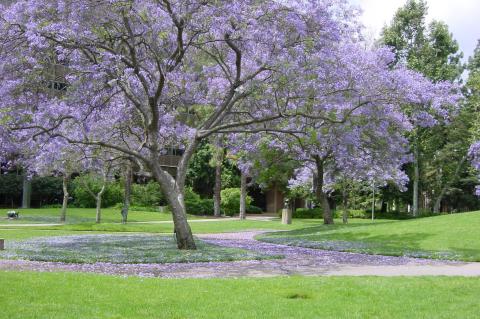Robert J. Blattner (1931—2015)
The UCLA Department of Mathematics lost a distinguished member of its faculty with the passing away on June 13, 2015, of Professor Emeritus Robert J. Blattner. He joined UCLA in 1957 and remained there till his retirement in 1992.
His work was mainly in the theory of representations of Lie groups and quantum mechanics, and his contributions earned him worldwide recognition while he was active. Within this framework, his work was quite broad and spanned functional analysis, algebra, and problems of quantization. He was most widely known for a conjecture that he made, contained in the so-called Blattner formula, which suggested that a certain deep property of the discrete series of representations of a semi-simple real Lie group was true. He made this conjecture in the mid 1960s. The discrete series, constructed by Harish-Chandra, which is basic to most central questions in harmonic analysis and arithmetic, was still very new and very difficult to penetrate. The conjecture was later proved and the solution was published in 1975 by Wilfried Schmid and Henryk Hecht by analytic methods, and later, in 1979 by Thomas Enright who used algebraic methods; both proofs were quite deep, giving an indication of the insight that led Blattner to this conjecture. In this brief note I want to bring to focus a more detailed picture of his work, his wide interests, and his services to UCLA as well as to the broader mathematics community.
He was born in Milwaukee, WI, on August 6, 1931. He took his A.B., summa cum laude, from Harvard University in 1953, and his Ph.D. from the University of Chicago, in 1957. His supervisor was Irving Segal, although his work subsequently was deeply influenced by the work of George Mackey (his undergraduate advisor at Harvard) on induced representations. The theory of induced representations was created by Frobenius in the late nineteenth century for finite groups, and its scope was enlarged significantly by Mackey who extended it to all locally compact separable groups. Mackey’s work depended on the detailed use of very subtle measure-theoretic arguments, and Bob reformulated and proved some of the main results of that theory in a smooth context and without any separability assumptions. Years later, in collaboration with his (second) wife Susan Montgomery, he treated algebra actions as well as dualities for Hopf algebra modules, inspired partly by the work of Takesaki on dualities for von Neumann algebras. These works were actually among the forerunners for the theory of quantum groups and non-commutative geometry that emerged later. He was also interested in geometric quantization which is essentially a way of doing quantum mechanics on manifolds, and wrote several papers on it, with J. H. Rawnsley and Joseph Wolf. As an indication of his breadth, I should mention that he was the supervisor of Mitch Rothstein (who is now a professor at the University of Georgia) and helped him to write a thesis on the foundations of supermanifolds. He had altogether 6 Ph.D. students who finished their dissertations under him. In those early days, his brilliance and versatility made him a very prominent member of our department. Here are the comments of two distinguished mathematicians on Bob:
For me, the presence of Bob at UCLA gave me a tremendous sense of security throughout my career at UCLA. It was because I had studied his thesis and his subsequent work on induced representations well before I came to the States, helped further by his warm and charming personality. I was lucky that his office was not far from mine. We chatted on many many occasions–Masamichi Takesaki, UCLA.
Bob was two years ahead of me in graduate school in Chicago. He was always willing to talk about mathematics and the world in general. I learned a lot from him then, and later. When Bob was at UCLA and I was at Berkeley, our discussions were more between equals, and we did some work together on geometric quantization–Joseph Wolf, UC Berkeley.
When my wife and I came to Los Angeles in 1965,I had already read some of his work. Bob was among our first friends and he remained so till the end of his life.
Bob’s attitude towards life was one of great intensity and great integrity. He maintained his sense of duty and service to the mathematical community not only during his active service which included being the Chair of our department during 1981—1984 but also for many years after retirement until his illness towards the end of his life made sustained activity an impossibility. From 1990-1994 he was on the statewide UC Board of Admissions and Relations with Schools (BoARS) and served as its President (BoARS sets UC admission standards for high school students and for transfers from community colleges). He then spent many years working for the UCLA Emeriti Center, on the board, and as president. He received the Emeriti of the Year award, given by the UCLA Emeriti association, in 2004. He was deeply interested in music, especially modern (Schoenberg, Berg, Boulez, etc), and took an active interest in the LA Opera and LA Philharmonic.
He was one of the people my wife and I had always admired and were fond of. His loss is mourned by many including us, but above all, by his wife Susan, and his three sons from his first marriage, Douglas, Robert, and William, and his six grandchildren from these. The Romanian Mathematical Society dedicated one session of its meeting in June 2015 to his memory. Those who came into contact with him will not forget him.
V. S. Varadarajan
Distinguished Research Professor
Additional Links:



